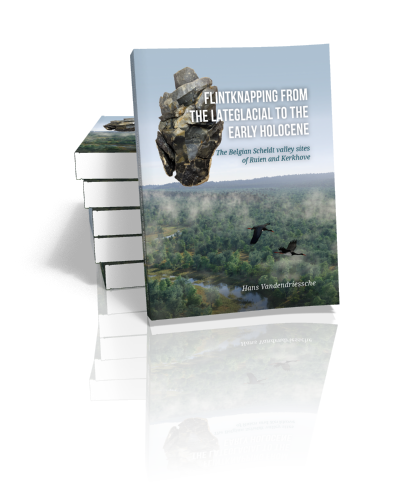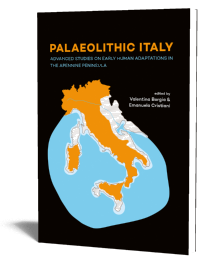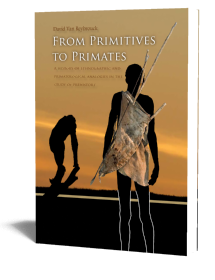Abstract:
This book discusses the lithic technology of the neighboring sites of Ruien and Kerkhove (Belgium). The Final-Palaeolithic occupation of Ruien took place during the harsh climatic conditions of the Younger Dryas. The Early and Middle Mesolithic hunter-gatherers from Kerkhove on the other hand lived in the temperate and forested environments of the subsequent Early Holocene period. The aim of this work is more precisely to gain a better understanding of how the practice of flintknapping evolved throughout this time period. Should we describe it as a period of long-term stability or as a period of technological rupture and innovation? Can we pinpoint precise moments of change and how are these changes expressed? In the raw material procurement strategies? In the knapping methods or knapping techniques? Or even in the spatial organization of technological behavior at the sites?
To provide an answer to some of these questions, the lithic artefacts of Ruien and Kerkhove have been subjected to a detailed analysis, among others by means of lithic refitting. For Ruien, the refitting demonstrates an early adoption of some of the knapping procedures considered typical for lithic industries occurring at the end of the Younger Dryas and the beginning of the Holocene. For the Early Mesolithic of Kerkhove, based on the presence of more elaborate chaînes opératoires, the refitting results advocate a greater affinity with Final-Palaeolithic traditions than often acknowledged. Finally, the analysis also yielded important new results for the Middle Mesolithic, that remained poorly known at a technological level until now. During the latter, the Rhine-Meuse-Scheldt (RMS) area sees the introduction of new knapping methods, knapping techniques and knapping objectives marking a clear rupture with the preceding periods.
Contents
Introduction
Chapter 1 The Lateglacial and Early Holocene in the Scheldt valley
1.1 Allerød (ca. 13,954 – 12,896 cal BP)
1.2 Younger Dryas (ca. 12,896 – 11,703 cal BP)/Preboreal (ca. 11,703 – 10,600 cal BP)
1.3 Boreal (ca. 10,600 – 8,600 cal BP)
Chapter 2 Methodology
2.1 Lithic Technology
2.2 Attribute Analysis
2.3 Refitting
2.4 Multiple lines of evidence
Chapter 3 Ruien Rosalinde
3.1 Site description
3.2 Absolute dating
3.3 The lithic assemblage – general characteristics
3.4 Raw material resources
3.5 Attribute analysis
3.6 Refitting results
3.7 Site structure and the function of space
3.8 Discussion
3.9 Conclusion
Chapter 4 Kerkhove Stuw
4.1 Site description
4.2 Absolute dating
4.3 The Early Mesolithic occupation
4.4 The Middle Mesolithic occupation
4.5 Conclusion
Technological behaviour from the Younger Dryas to the end of the Early Holocene – concluding remarks
The long-term development of a bladelet knapping concept
Towards a social organization of technology
The contributions of refitting
Conclusion
Bibliography


Dr.
Hans Vandendriessche
Hans Vandendriessche is a research assistant at Ghent University where he obtained his doctoral degree in 2021. His interests in the field of prehistoric archaeology include, among others, lithic technology, experimental archaeology and raw material provenancing. His publications cover a broad range of topics, reaching from the large-scale excavations of Kerkhove and the lithic technology of the Pleistocene-Holocene transition to the Belgian Neolithic and its material culture. Currently, in the framework of a new research project, he aims to further explore the origins of the Middle Mesolithic in the Rhine-Meuse-Scheldt area.
read more












